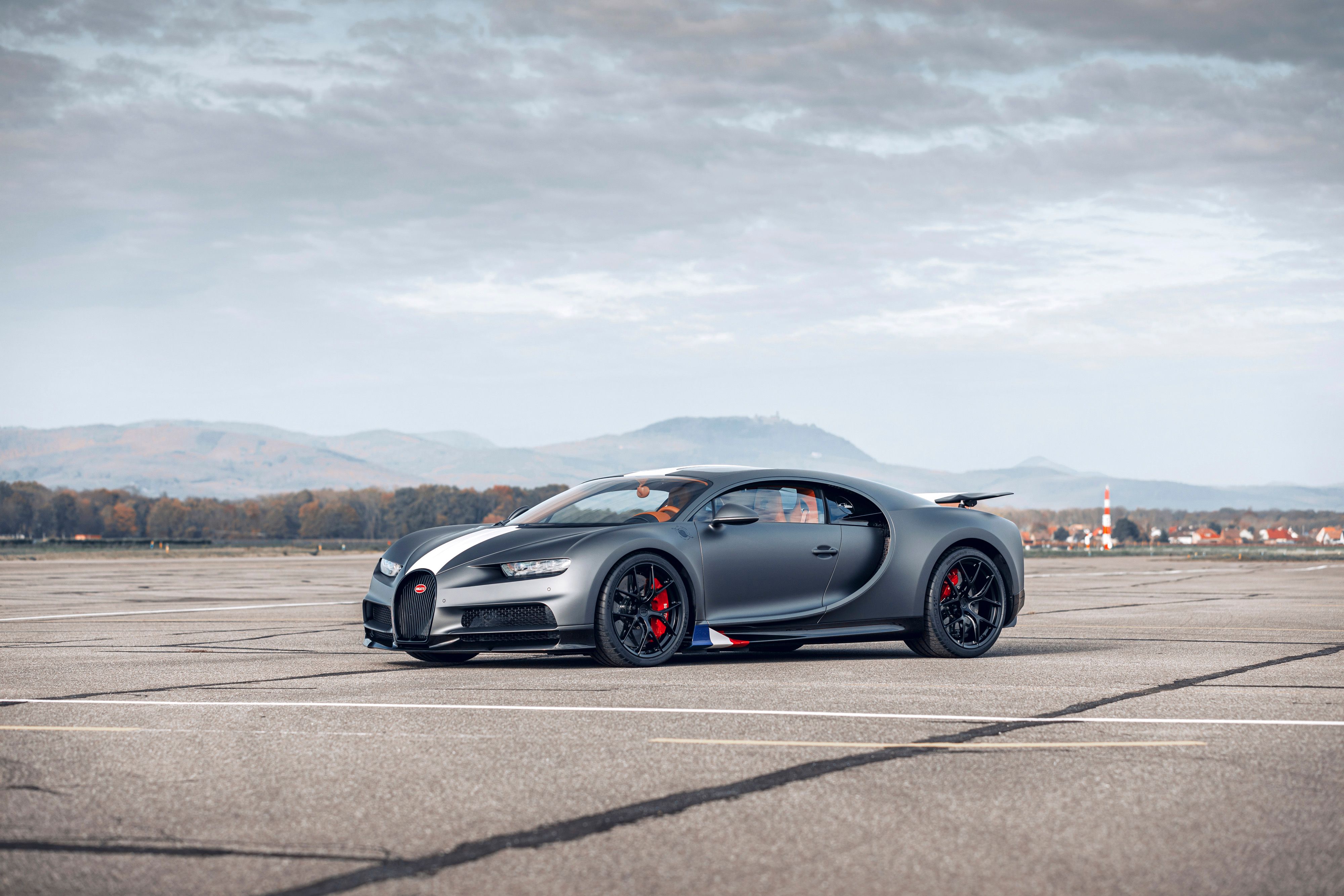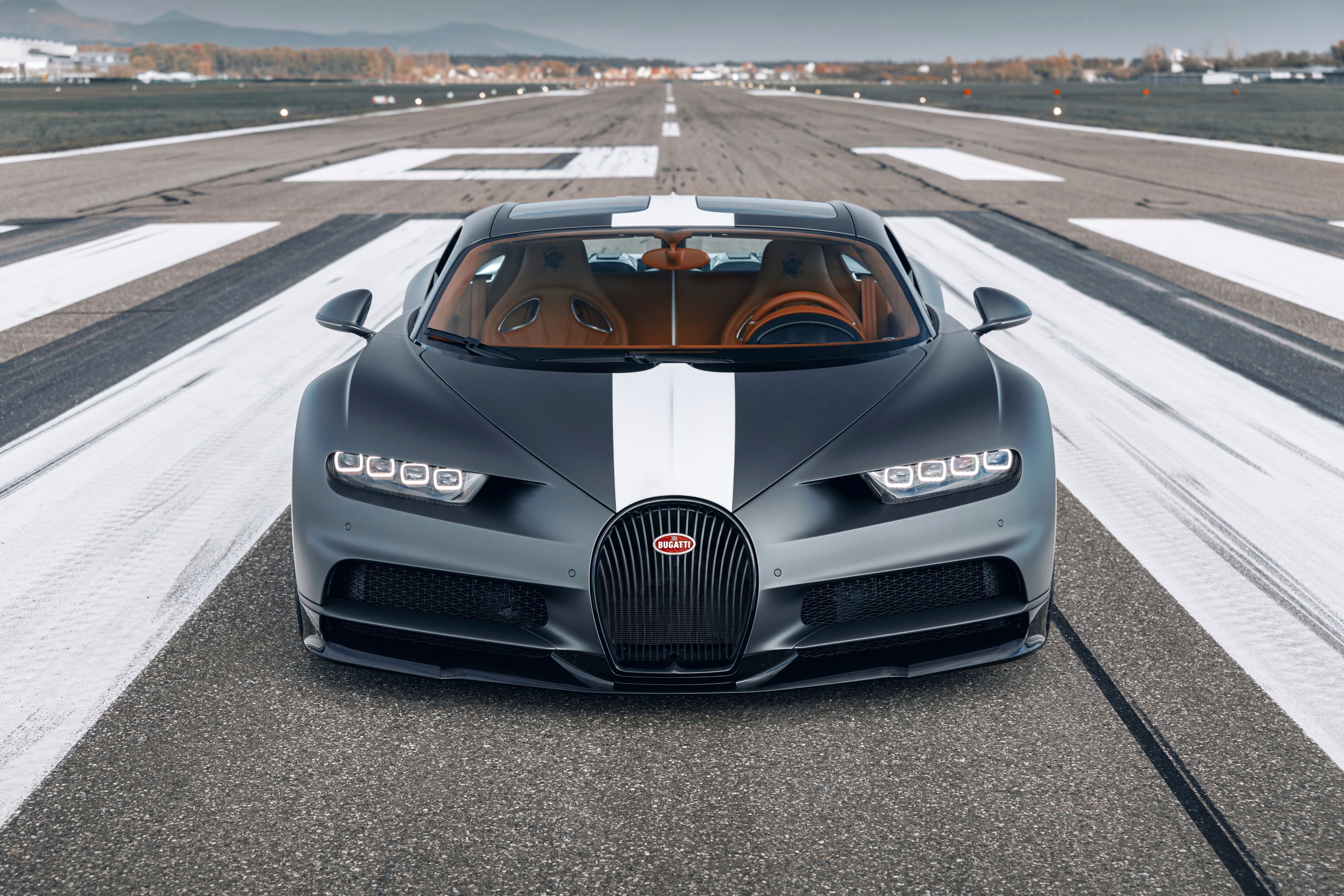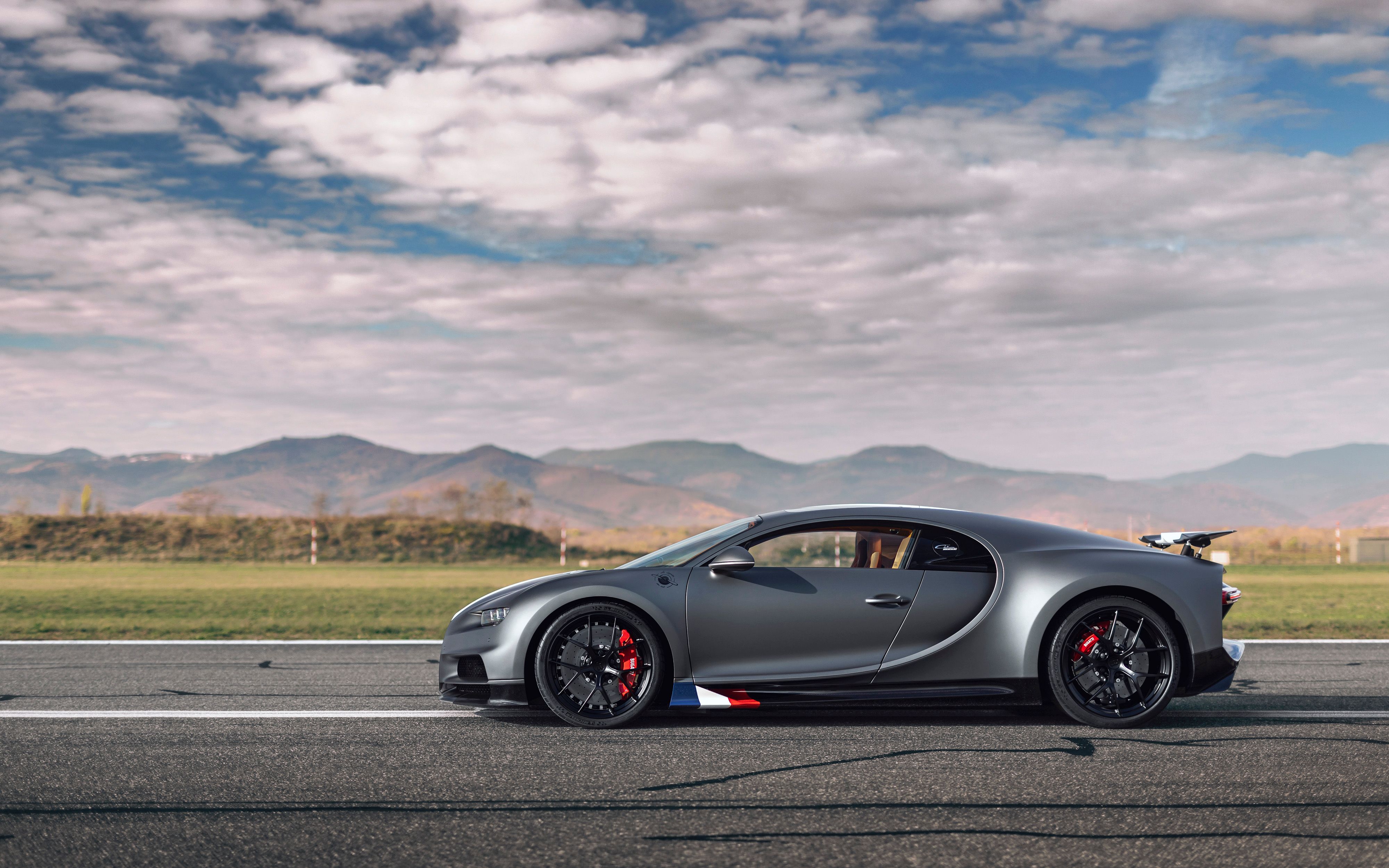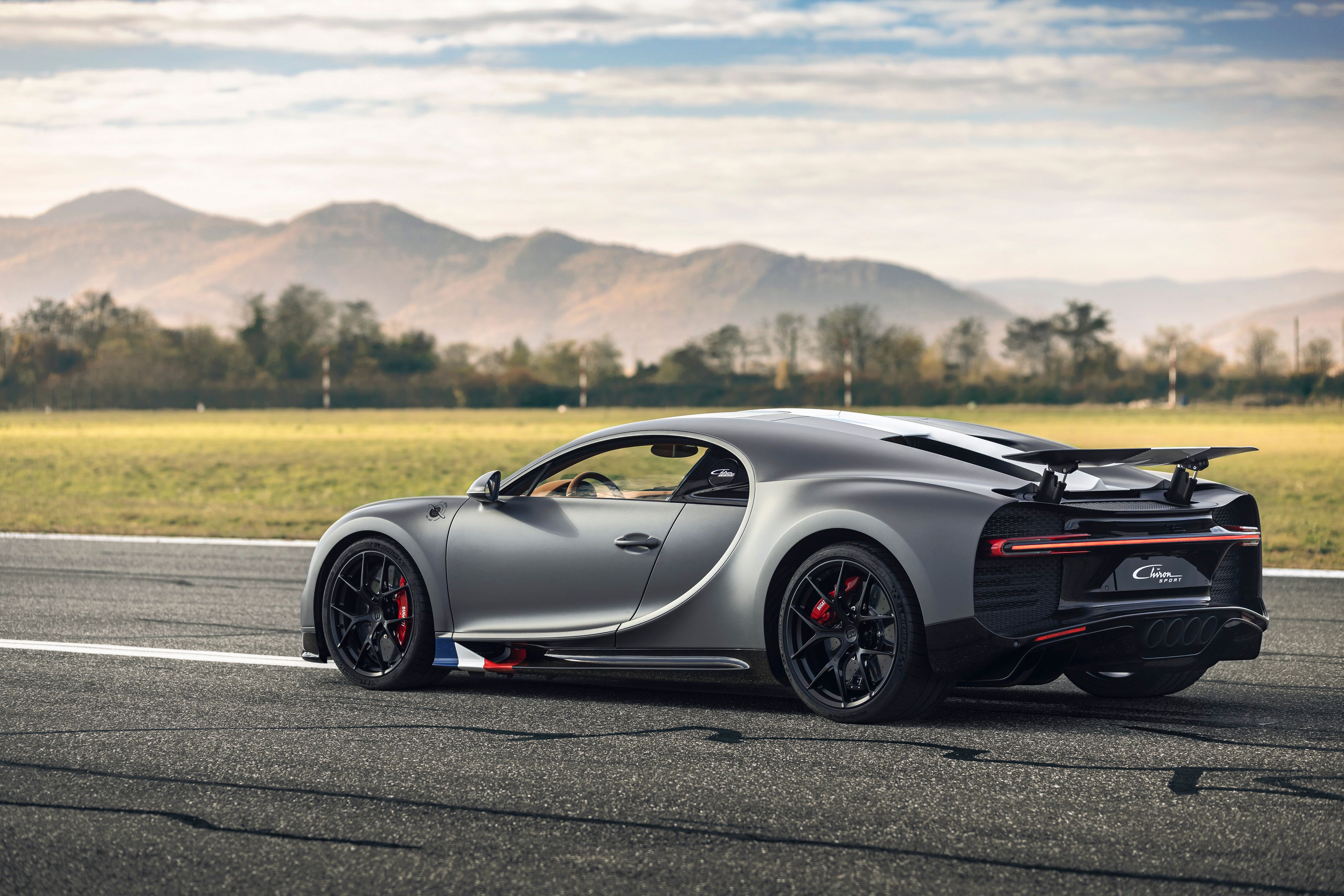Few people know that Ettore Bugatti sometimes found inspiration in aviation and he even designed aircraft engines back in 1915, a hobby that culminated in 1937 with a full aircraft design mean to break speed records.
The brand itself has worked with race drivers that had a love affair with flying, including the likes of Albert Divo, Robert Benoist, Meo Costantini, and even Roland Garros drove a Bugatti Type 18. The Chiron Sport “Les Légendes du Ciel” (French for legends of the sky) is here to celebrate that bond.
First things first: the paint. Called Gris Serpent (which translates to snake grey in English), the paint is of the matte variety and was used to evoke the exterior color of airplanes crossing the skies back in the 1920s.
The horseshoe grille has also been tweaked in an artsy way, so that the thin-slat pattern mimics a squadron of planes flying in formation during an air parade. What’s more, there’s a white gloss stripe running the whole length of the Chiron, from front to rear, and the W-16 engine’s cover is made of exposed black carbon fiber, just like the front area of door sills and part of the exhaust cover.
On the inside, lucky owners will be greeted by a full Gaucho light-brown leather cabin, a not back to the cockpit of older airplanes. The added spice inside the Chiron Sport “Les Légendes du Ciel” comes from diamond-cut aluminum trim and the optional Sky View glass roof.
In our opinion, la pièce de résistance lies on the door panels, where Bugatti sketched a Nieuport 17 airplane and a Type 13 racing each other. The Nieuport 17 was a much-praised French biplane that stood out for its speed, agility, and reliability. It was also powered by a nine-cylinder engine good for around 130 horsepower.
There are no performance bumps for the Bugatti Chiron Sport “Les Légendes du Ciel”, which means the 8-liter W-16 engine still cranks out 1,479 horsepower and 1,600 Newton-meters (1,180 pound-feet) of torque for an electronically-limited Vmax of 420 kph (261 mph).




